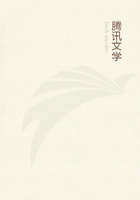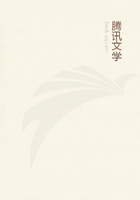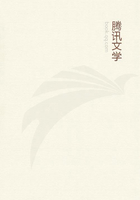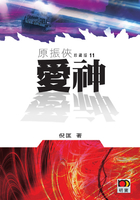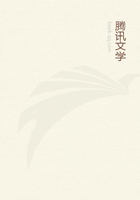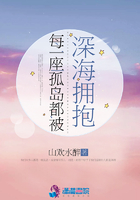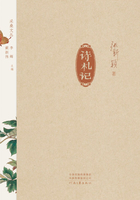The same notion of the propagation of the rice by a male and female power finds expression amongst the Szis of Upper Burma. When the paddy, that is, the rice with the husks still on it, has been dried and piled in a heap for threshing, all the friends of the household are invited to the threshing-floor, and food and drink are brought out. The heap of paddy is divided and one half spread out for threshing, while the other half is left piled up. On the pile food and spirits are set, and one of the elders, addressing the father and mother of the paddy-plant, prays for plenteous harvests in future, and begs that the seed may bear many fold. Then the whole party eat, drink, and make merry. This ceremony at the threshing-floor is the only occasion when these people invoke the father and mother of the paddy.
3. The Spirit of the Corn embodied in Human Beings.
THUS the theory which recognises in the European Corn-mother, Corn-maiden, and so forth, the embodiment in vegetable form of the animating spirit of the crops is amply confirmed by the evidence of peoples in other parts of the world, who, because they have lagged behind the European races in mental development, retain for that very reason a keener sense of the original motives for observing those rustic rites which among ourselves have sunk to the level of meaningless survivals. The reader may, however, remember that according to Mannhardt, whose theory I am expounding, the spirit of the corn manifests itself not merely in vegetable but also in human form; the person who cuts the last sheaf or gives the last stroke at threshing passes for a temporary embodiment of the corn-spirit, just as much as the bunch of corn which he reaps or threshes. Now in the parallels which have been hitherto adduced from the customs of peoples outside Europe the spirit of the crops appears only in vegetable form. It remains, therefore, to prove that other races besides our European peasantry have conceived the spirit of the crops as incorporate in or represented by living men and women. Such a proof, I may remind the reader, is germane to the theme of this book; for the more instances we discover of human beings representing in themselves the life or animating spirit of plants, the less difficulty will be felt at classing amongst them the King of the Wood at Nemi.
The Mandans and Minnitarees of North America used to hold a festival in spring which they called the corn-medicine festival of the women. They thought that a certain Old Woman who Never Dies made the crops to grow, and that, living somewhere in the south, she sent the migratory waterfowl in spring as her tokens and representatives. Each sort of bird represented a special kind of crop cultivated by the Indians: the wild goose stood for the maize, the wild swan for the gourds, and the wild duck for the beans. So when the feathered messengers of the Old Woman began to arrive in spring the Indians celebrated the corn-medicine festival of the women. Scaffolds were set up, on which the people hung dried meat and other things by way of offerings to the Old Woman; and on a certain day the old women of the tribe, as representatives of the Old Woman who Never Dies, assembled at the scaffolds each bearing in her hand an ear of maize fastened to a stick. They first planted these sticks in the ground, then danced round the scaffolds, and finally took up the sticks again in their arms. Meanwhile old men beat drums and shook rattles as a musical accompaniment to the performance of the old women. Further, young women came and put dried flesh into the mouths of the old women, for which they received in return a grain of the consecrated maize to eat. Three or four grains of the holy corn were also placed in the dishes of the young women, to be afterwards carefully mixed with the seed-corn, which they were supposed to fertilise. The dried flesh hung on the scaffold belonged to the old women, because they represented the Old Woman who Never Dies. A similar corn-medicine festival was held in autumn for the purpose of attracting the herds of buffaloes and securing a supply of meat. At that time every woman carried in her arms an uprooted plant of maize. They gave the name of the Old Woman who Never Dies both to the maize and to those birds which they regarded as symbols of the fruits of the earth, and they prayed to them in autumn saying, Mother, have pity on us! send us not the bitter cold too soon, lest we have not meat enough! let not all the game depart, that we may have something for the winter! In autumn, when the birds were flying south, the Indians thought that they were going home to the Old Woman and taking to her the offerings that had been hung up on the scaffolds, especially the dried meat, which she ate. Here then we have the spirit or divinity of the corn conceived as an Old Woman and represented in bodily form by old women, who in their capacity of representatives receive some at least of the offerings which are intended for her.
In some parts of India the harvest-goddess Gauri is represented at once by an unmarried girl and by a bundle of wild balsam plants, which is made up into the figure of a woman and dressed as such with mask, garments, and ornaments.
Both the human and the vegetable representative of the goddess are worshipped, and the intention of the whole ceremony appears to be to ensure a good crop of rice.
4. The Double Personification ofthe Corn as Mother and Daughter.
COMPARED with the Corn-mother of Germany and the Harvest-maiden of Scotland, the Demeter and Persephone of Greece are late products of religious growth.


